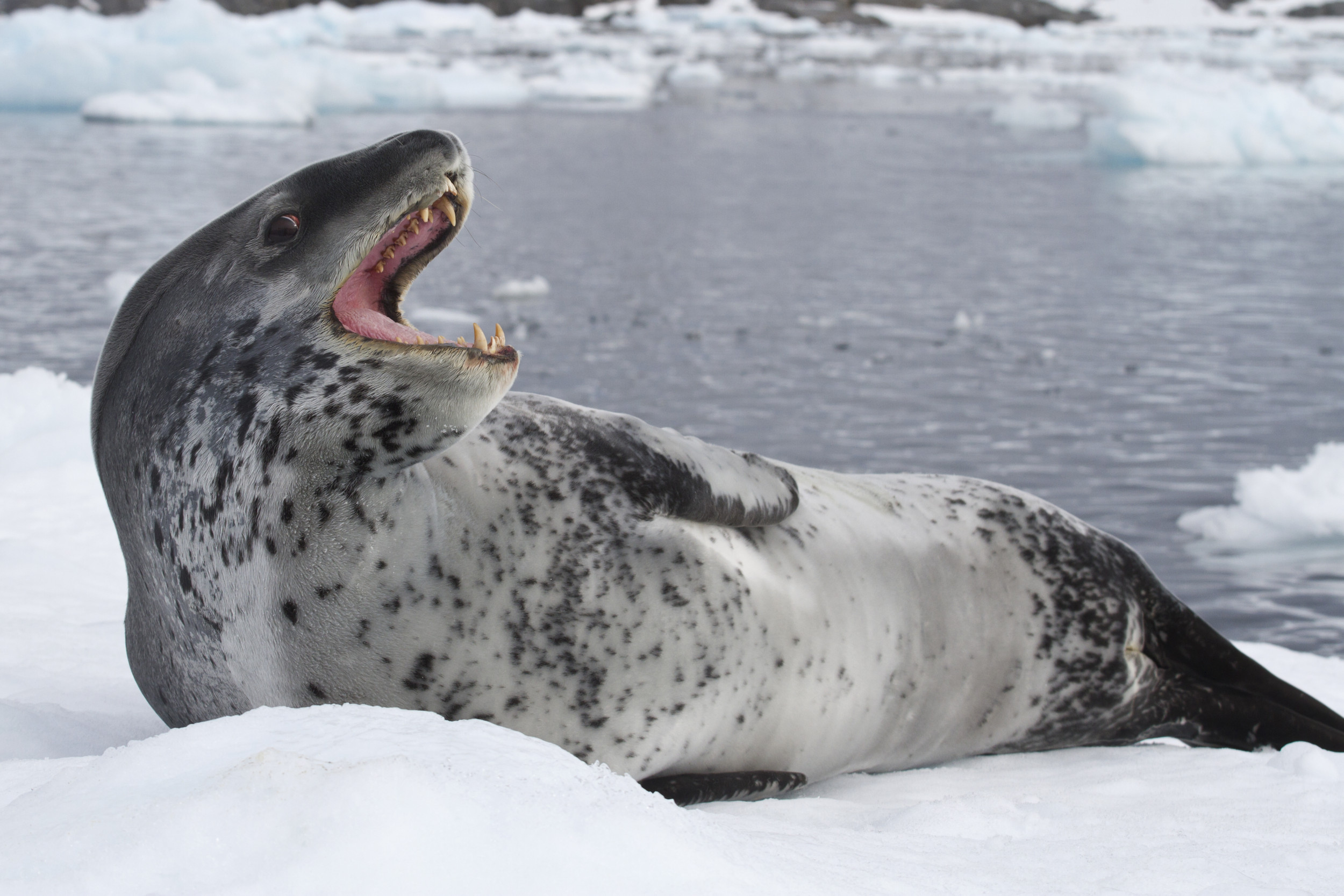
When you picture the Antarctic, you probably imagine penguins waddling, whales breaching, and perhaps the occasional fluffy albatross soaring overhead. But there’s another, less cuddly, resident that commands respect and embodies the raw power of this icy continent: the leopard seal. With its sleek body, piercing eyes, and an impressive set of teeth that hint at its formidable nature, the leopard seal (scientific name: Hydrurga leptonyx) is a true apex predator of the Southern Ocean.
A Hunter’s Physique:
Leopard seals are built for speed and agility in the water. Growing up to 11.5 feet (3.5 meters) long and weighing over 1,300 pounds (600 kg), females are generally larger than males. Their streamlined bodies, powerful flippers, and distinctively long, snake-like necks allow them to twist and turn with remarkable grace as they pursue their prey.
But what truly sets them apart is their unique dentition. Their molars are adapted for both tearing flesh and filtering krill, showcasing their diverse diet. The front teeth are sharp and conical, perfect for gripping slippery prey, while the back teeth interlock, forming a sieve-like structure. This allows them to effectively strain krill from the water, much like baleen whales do, making them incredibly versatile hunters.
What’s on the Menu?
While their name might suggest a feline diet, leopard seals are opportunistic carnivores with a varied menu. Their primary food source is krill, which they consume in vast quantities, especially during certain times of the year. However, they are also renowned for their predatory prowess, actively hunting a wide range of Antarctic wildlife, including:
- Penguins: Indeed, they are one of the main predators of penguins, often lurking near ice edges, waiting to ambush unwary birds entering or exiting the water.
- Other Seals: Younger or smaller seals, particularly crabeater seals, can also fall victim to a hungry leopard seal.
- Fish and Cephalopods: Various species of fish and squid also make up a portion of their diet.
Their hunting strategy is often one of stealth and surprise. They are incredibly patient, waiting for the opportune moment to strike, showcasing their intelligence and adaptability.
Solitary Lives in an Icy World:
Leopard seals are largely solitary creatures, preferring to roam the vast expanse of the Southern Ocean alone. They are highly territorial, especially during the breeding season. Pups are typically born on the ice between November and December, and the mother provides sole care.
Despite their formidable reputation, not much is known about their precise population numbers due to the challenging and remote nature of their habitat. However, they are currently listed as “Least Concern” by the IUCN, though ongoing monitoring is crucial given the impacts of climate change on their ecosystem.
A Vital Link in the Ecosystem:
As apex predators, leopard seals play a crucial role in maintaining the health and balance of the Antarctic ecosystem. By regulating populations of krill, penguins, and other seals, they contribute to the natural order of this fragile environment.
So, the next time you think of the Antarctic, remember the leopard seal – a powerful, enigmatic, and surprisingly adaptable creature that truly embodies the wild spirit of the frozen south. Their presence reminds us of the incredible diversity of life on our planet and the importance of preserving these wild spaces for generations to come.
More photos below ↓














Disclaimer: This blog post is for edutainment purposes only and may not be entirely accurate.






